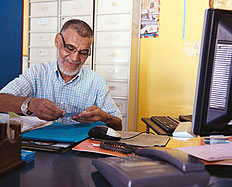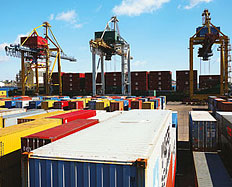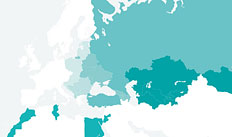Chapter 2
Growth
The intensification of the eurozone crisis occurred late enough in 2011 not to derail the transition region’s full-year economic performance, which was rather better than that in 2010. With the benefit of high prices, commodity exporters in Central Asia grew robustly in 2011, particularly Mongolia, which expanded by over 17 per cent on the back of its mining boom, related foreign direct investment (FDI) inflows and highly pro-cyclical fiscal policy. Elsewhere, Turkey also maintained strong growth, fuelled by a credit boom financed largely by capital inflows, while Estonia, bouncing back from its deep and protracted 2007-09 recession, was the best performer in the CEB region. Within the EEC region, Georgia and Moldova returned unexpectedly strong results for the year, in part due to higher exports to neighbouring countries and recovery of agricultural output.
In contrast, Egypt and Tunisia in the southern and eastern Mediterranean (SEMED) region suffered recessions in 2011 as a result of declines in investment, tourism and FDI flows, reflecting political and economic uncertainties following their revolutions in the spring. While most SEE countries grew faster than in 2010, their recovery was dampened by the onset of the eurozone crisis. In the CEB region, Croatia and Slovenia recorded zero and slightly negative growth, respectively, as domestic factors (such as a troubled Slovenian financial sector) compounded the effects of the weak external environment. Meanwhile, a significant slow-down of the formerly booming Azerbaijani economy reflected a year of shrinking oil production.
Most countries that grew healthily in 2011 did so on account of private consumption (see Chart 2.1). Exceptions included Armenia and the Slovak Republic, which expanded due to substantially higher exports, and Kazakhstan, where a combination of stronger exports, greater government consumption and higher investment compensated for a drop in private consumption. Investment was also an important driver in the Baltic countries. After the Baltic states increased their competitiveness through internal devaluations during the global crisis, exports have become a much more prominent component of their outputs, replacing real estate investment (see Chart 2.2). Now the export industry is beginning to stimulate a different kind of investment, mainly in the manufacturing sector. Exports have also increased in relative importance in many SEE economies since 2007, while Mongolia, in contrast, has seen a dramatic fall in the export share of its output as investments in mining (that should result in higher exports in the future) have become predominant.
Source: International Monetary Fund International Financial Statistics (IMF IFS)
Note: This chart depicts the contribution of components of national accounts to annual real gross domestic product (GDP) growth in 2011. “Other” component includes changes in inventories and statistical discrepancy.
Source: IMF IFS. Note: This chart shows the difference between the share of GDP in 2011 and the share of GDP in 2007 for gross investment and exports of goods and services, respectively.
More recently, in the first half of 2012, growth in countries across the transition region slowed down markedly as a result of the widening “spillovers” from the eurozone crisis. A large majority of transition economies recorded weaker year-on-year growth in the second quarter of 2012 relative to the third quarter of 2011 (see Chart 2.3).
Source: National authorities via CEIC Data. Note: This chart shows year-on year growth rates for the third quarter (Q3) of 2011 and the second quarter (Q2) of 2012. Regional aggregates are weighted using World Economic Outlook (WEO) estimates of nominal dollar GDP in 2011.
Unsurprisingly, growth has slowed in most of the CEB countries, which are among the most vulnerable to developments in the single currency area. Having recorded successive quarter-on-quarter contractions in the first two quarters of this year, both Croatia and Hungary are now in a recession. Output in Slovenia contracted markedly in the second quarter of 2012, adding to its own “double dip” recession of early 2011. The Baltic states, Poland and the Slovak Republic performed better, although figures for the second quarter of 2012 suggest that Polish growth is slowing down as domestic demand weakens. In the SEE region Bulgaria and Romania also experienced a slow-down while the economies of FYR Macedonia and Serbia contracted relative to the first half of 2011. In the EEC region the two economies more closely intertwined with the eurozone – Moldova’s and Ukraine’s – saw their year-on-year growth slow from around 6 per cent in the third quarter of 2011 to 0.6 and 3 per cent respectively, in the second quarter of 2012.
Economies further east have also started slowing down. Since early 2012, the crisis has negatively impacted on oil and other commodity prices and on investor confidence. This has in turn undermined growth in Central Asia and, more importantly for the transition region as a whole, in Russia, where quarterly gross domestic product (GDP) and industrial production have slowed significantly during the first half of 2012. In addition to lower commodity prices, country-specific developments (such as problems at a gold mine in the Kyrgyz Republic) have contributed to weaker growth in Central Asia. Continuing political uncertainty has weakened growth performance in the SEMED region.







